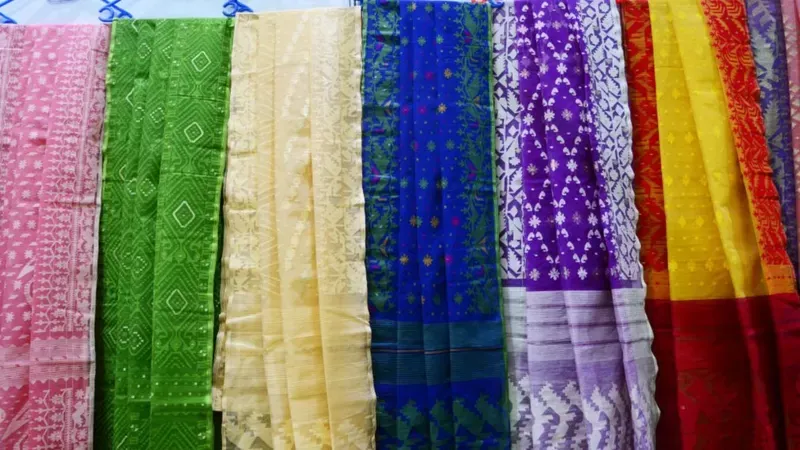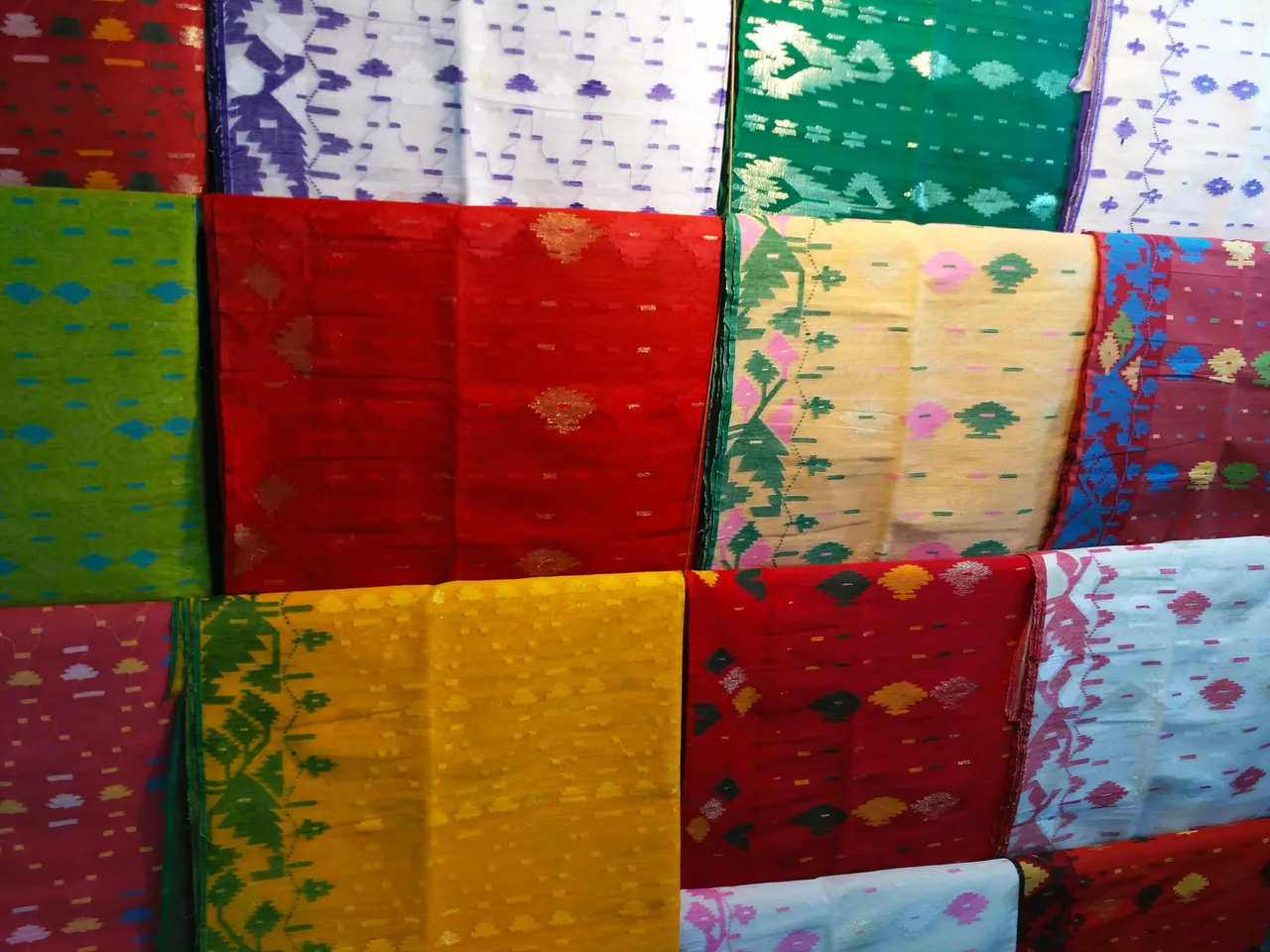We have a golden past in weaving. Muslin is the main vehicle in that tradition. In the course of time, we have lost that historical weaving muslin. As a tradition of muslin, we are still using Jamdani. The original source of the name Jamdani is, according to many, 'Jam' a Persian word. This means the best wine. And 'Dani' means container. So Jamdani stands for excellent wine pot. As the name implies, the Jamdani art is very ancient and has spread all over the world.

picture
Jamdani has two main features. One is the continuity of the characteristic geometric pattern which is influenced by the Iranian design tradition and the other is that its motifs are embedded in the fabric while weaving. Jamdani's design is as bright as its tradition. The texture design of the jamdani is basically of three classes.That is buta, jal and teshari. If a special floral motif is spread out on the ground, it is called butidar or buta. In addition, the corner design of the floral design is called teshari and the attachment of motif is called jal. These motifs of Jamdani are influenced by the environment of the weavers, so the names of the motifs are changed from weaver to weaver.
Jamdani weaving is done in a lot of open rooms. However, the light is kept close to the loom. Two weavers knit together. One is a master craftsman, the other is an assistant craftsman. The original artisan sits on the right side of the loom. And the assistant is sitting on the left side. During the weaving, the weavers run the yarn through the yarn drawn with their fingers and make the design look perfect. Later, according to the motif of the yarn, the texture is woven using different makus according to the color of the area. Improved maku of Jamdani weaving is made from tamarind or bamboo.
Once upon a time, weaving and designing of jamdani was done by the weavers in their own way of thinking and folklore. Now the weaving techniques of the weavers have been added to the various ideas of the fashion designers of the country in recent times. As a result, there are many variations in the color and design of jamdani. Apart from Jamdani saree, it is now being used in other garments as well. Once only a class of elites used Jamdani but now it is being used by fashion conscious women of different classes and professions including upper and middle class.
At present, a variety of trendy clothes are being made in Jamdani motif. Such as salwar-kameez, punjabi, kurta, tops etc. These garments have become very popular among the young people of today. Which is quite suitable for organizing domestic festivals. Jamdani is the name of this traditional weave. Jamdani weaving has become unique in its popularity even today as it is the bearer of the richness that is spread inside this industry in our tradition. Jamdani was once a complement to muslin and settled in our fashion tradition. Gradually it became the garment of aristocracy with the skillful skill of the weavers of Bengal.
